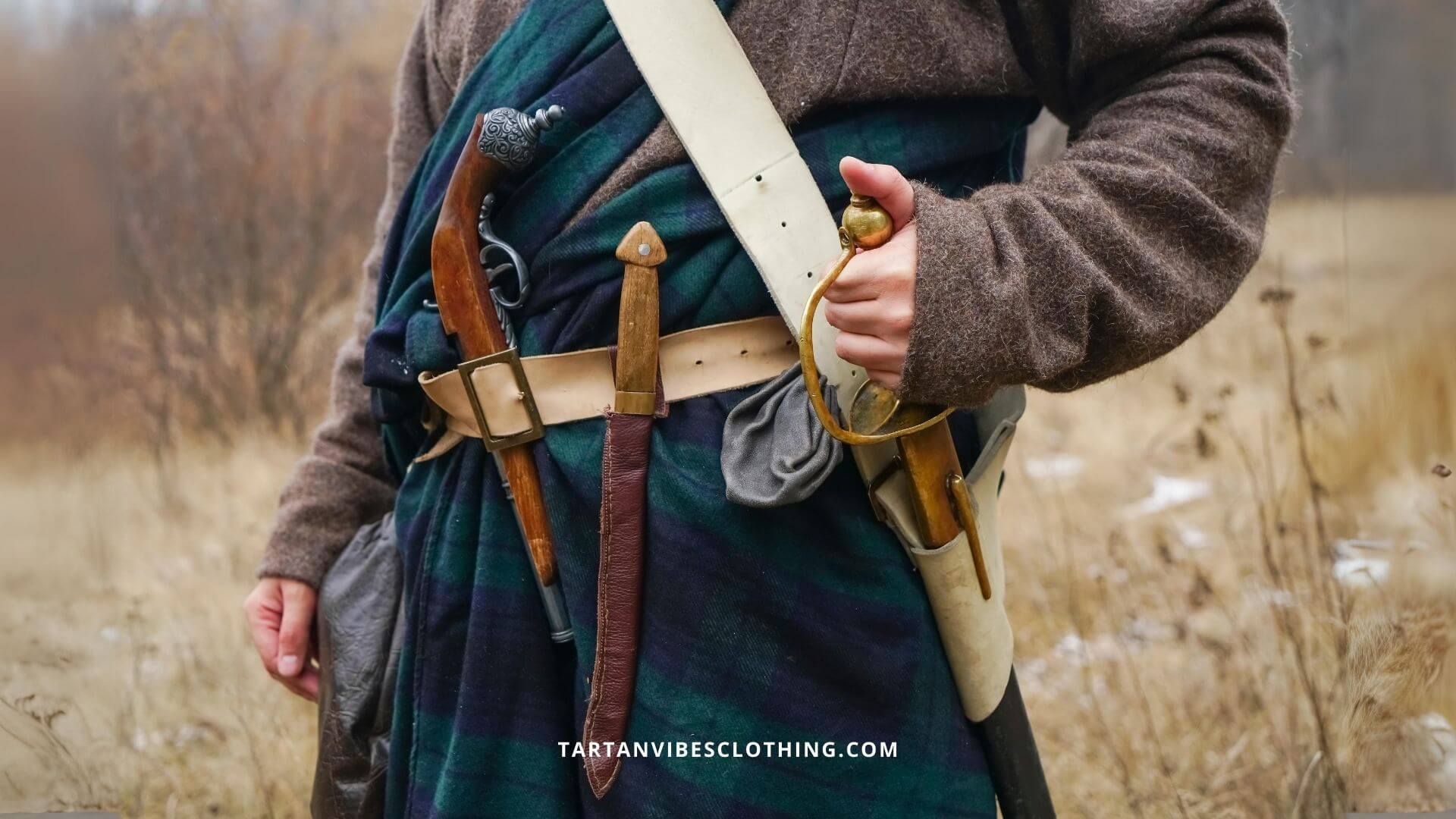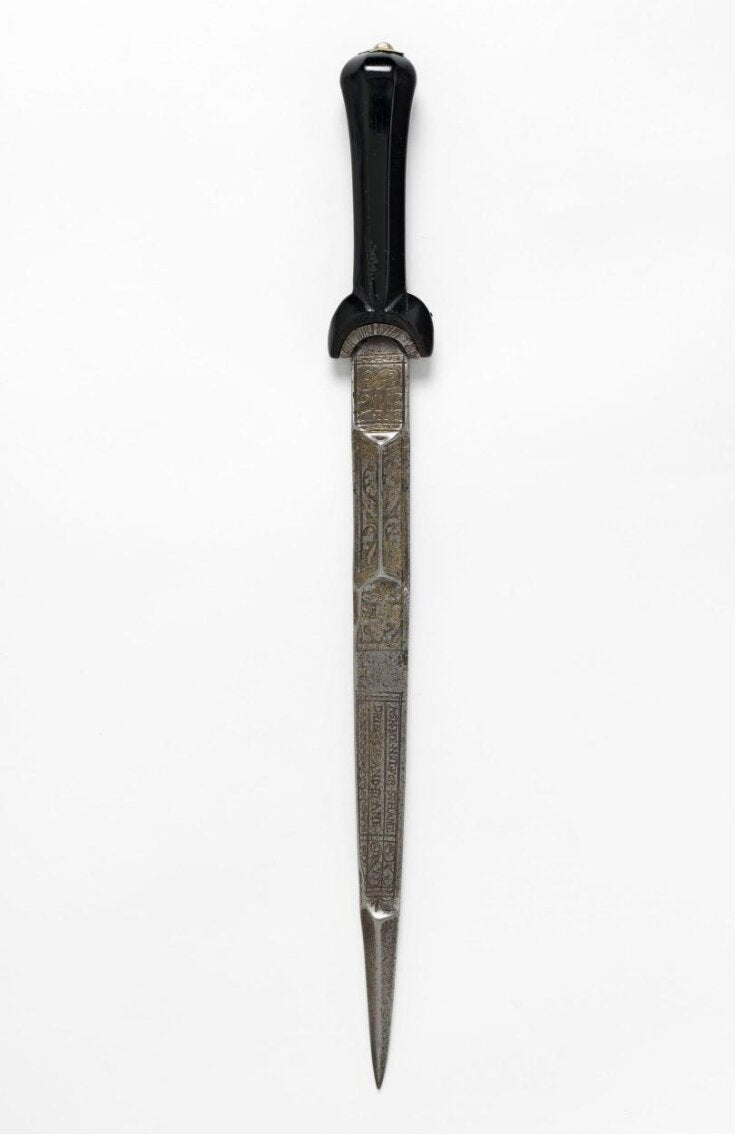Table of Content
I. Introduction
The Scottish Dirk is more than just a dagger; it represents Scotland's bravery, artistry, and heritage. Traditionally worn as a sidearm by Highlanders, the dirk has evolved through centuries of use and craftsmanship, becoming a symbol of Scottish identity. This article will explore its rich history, intricate design, and cultural significance, providing a comprehensive understanding of the Scottish Dirk.
II. What is a Scottish Dirk?
The Scottish Dirk is a distinctive long dagger characterized by its unique shape and design, originating from Scotland. Its name is derived from the Highland dirk, known in Scottish Gaelic as "dearg." This weapon was historically utilized by officers who engaged in close combat at sea during the Age of Sail, and it also served as a personal sidearm for the Highlanders. Additionally, the Scottish Dirk became the customary sidearm for members of the Highland clans and found its way into use by officers, pipers, and drummers within Scottish Highland regiments between 1725 and 1800.

In contrast to standard daggers that can be found across various cultures, the Scottish Dirk boasts an elongated and sharp blade, paired with a meticulously crafted handle often made from materials like intricately carved wood, bone, or antler. This iconic weapon served a dual purpose; it was not only wielded in combat but also possessed ceremonial importance, underscoring its significant role within Scottish cultural heritage.
III. The Historical Background of the Scottish Dirk
1. Origins and Early Use
The origins of the Scottish dirk have its roots in the late medieval era, emerging as a vital component of a Highland warrior's weaponry. Its design reflects a blend of Gaelic and broader European influences. In its early iterations, the Scottish Dirk served primarily as a practical implement for hunting and personal protection. Initially crafted from iron and later evolving to steel, these daggers typically featured a straight blade, hilt, and cross-guard. Unlike more giant swords that were often used for more sweeping attacks, the Scottish Dirk was explicitly created for rapid and accurate strikes, making it an effective tool for both offensive maneuvers and defensive actions.
Throughout the Jacobite uprisings, the Scottish Dirk took on a significant role as a symbol of Scottish identity and defiance. It became a recognizable presence at crucial historical moments, ranging from small-scale battles to grand ceremonial gatherings, thereby solidifying its status as a cherished representation of Scottish cultural heritage.
Here’s a comprehensive overview of the Scottish Dirk, offering insights into this culturally significant accessory and its importance in Scottish heritage:
Key Points |
Details |
Origin |
Scottish heritage, used by naval officers and Highland warriors. |
Design |
It is slender and elongated, featuring a blade with two sharp edges, usually measuring between 12 to 20 inches long. |
Usage |
Originally designed as a personal weapon for close combat; it is now frequently seen as a ceremonial piece or a collector's item. |
Evolution |
Evolved from longer swords and rapiers to better fit close combat and naval warfare. |
Cultural Significance |
An emblem of status and skill in Scotland's military past; a component of customary Scottish dress. |
Modern Day |
Still used today in ceremonial roles and as a collectible by enthusiasts. |
Materials |
Usually constructed from steel, featuring handles that can be embellished with wood, metal, or gemstones. |
2. The Dirk in Scottish Warfare

Over many centuries, the Scottish Dirk has been integral to the history of warfare in Scotland. Highland fighters would often wield a dirk in conjunction with their more giant claymore swords, particularly in scenarios where using a sword was not feasible due to the close quarters of the battle. The Scottish Dirk was highly regarded for its adaptability; it could penetrate armor and inflict deadly wounds thanks to its keen edge. Its significance was further emphasized during historical events such as the Jacobite uprisings when members of Highland Clans depended on the Scottish Dirk as a crucial instrument in their arsenal.
3. Influence of Viking Culture on Scottish Blades

The Vikings' incursion into Scotland introduced significant expertise in the art of weapon-making. The design of the Scottish Dirk, a traditional Scottish dagger, was influenced to some extent by the Viking seax knives, which are characterized by their single-edged blades and robust build. This blending of cultural influences led to the creation of a distinctive blade that merged the practical design principles of Norse weapons with the artisanal skills of Scottish artisans, resulting in a weapon that possessed both aesthetic appeal and lethal effectiveness.
IV. Design and Features of the Scottish Dirk
1. Blade

The Scottish Dirk is renowned for its distinctive design, featuring a long, slender blade with a sharpened edge. Unlike common daggers, Scottish Dirk often includes decorative elements such as carved hilts, metal inlays, and detailed scabbards. The blade length, typically between 10 and 20 inches, tapers to a point, making it practical for thrusting and slashing. While it is longer than a conventional dagger, it remains manageable for use in close-quarters combat situations.
2. Hilt

The dirk's hilt is crafted from various materials, such as wood, antler, or bone, and frequently displays elaborate carvings. Additionally, it may incorporate a pommel, which serves as a counterbalance to the blade.
3. Scabbard

Typically, Scottish Dirk comes with a decorative leather scabbard that is often embossed or adorned with metal fittings, adding to its visual appeal. These features work together to produce a weapon that is not only practical for combat but also possesses significant artistic value.
V. The ancestors of the Scottish Dirk
1. Ballock Daggers
During the Middle Ages, the ballock dagger gained popularity among both soldiers and civilians. This weapon is characterized by the unique shape of its hilt, which resembles male anatomy: it features two rounded protrusions topped with a cylindrical handle. Furthermore, these daggers were commonly worn in a prominent position on the belt, with the handle oriented upwards. They first made their appearance in continental Europe in the early 14th century, and half a century later, they were depicted in effigial monuments within the British Isles, most notably those honoring Sir William de Aldeburgh and Robert Parys.

Typically, the hilts of ballock daggers were crafted from carved wood, although examples made from materials such as metal, bone, or ivory have also been discovered. Occasional pieces crafted from more exotic substances like agate have surfaced as well. The sheaths that housed these daggers were constructed from robust leather.
2. Dudgeon Daggers
Dudgeon daggers exhibited similarities in hilt design to ballock daggers, primarily featuring wooden grips that were either cylindrical or octagonal. The characteristic protrusions found on ballock daggers remained present in these blades. Some variants displayed intricate interlace carvings along the grip. A significant distinction, however, was in the blade construction; dudgeon dagger blades were predominantly double-edged, typically possessing either a thick diamond cross-section or a hollow ground design. These blades frequently included a pronounced ricasso section and were often adorned with etchings and gilding.

Dudgeon daggers were generally kept in sheaths made of hardened leather, which were commonly cylindrical in shape and often featured tooling according to Forman's style. While it appears that metal scabbard mounts were relatively rare, there is evidence to suggest that they did exist.
VI. Symbolism and Meaning of the Scottish Dirk
1. The Dirk in Scottish Culture
In addition to its functional applications, the Scottish Dirk carries profound symbolic significance within Scottish culture. The Scottish dirk stands as a potent emblem of Scottish heritage, frequently symbolizing values of honor and loyalty. It is customarily donned as an element of Highland attire, particularly during ceremonial events like weddings or clan reunions. Including the dirk in these contexts highlights its importance beyond merely being a tool for combat; it represents the essence of Scottish customs and legacy.

2. The Scottish Dirk as Family Heirlooms
3. The Dirk in Clan Rituals and Ceremonies
Dirks held a significance that extended beyond their function as mere weapons; they were integral to the cultural practices and ceremonies of clans. These blades were often employed in essential rituals such as oaths and marriages, serving as a powerful symbol of the connection between the individual who wielded them and their clan or community.
In addition to being instruments for combat or defense, dirks embodied the values and traditions of the clan, marking key life events and reflecting the deep-rooted ties among members. The presence of a Scottish Dirk during these occasions reinforced social bonds and underscored the shared identity within the clan.

VII. Conclusion
The Scottish Dirk is far more than a simple dagger; it symbolizes Scotland's rich history, culture, and fighting spirit. From its origins in medieval warfare to its role in modern Scottish dress, the Scottish dirk embodies a legacy that continues to captivate and inspire. The Scottish Dirk remains a powerful emblem of Scotland's enduring heritage, whether as a collector's item, a cultural artifact, or a ceremonial piece.
Frequently Asked Questions
Are dirks legal in Scotland?
Owning a Scottish dirk is permitted in Scotland, but carrying it in public without a valid reason, like wearing it with traditional Highland attire, is against the law.
How does the Scottish Dirk differ from other daggers?
The Scottish Dirk is longer and uniquely crafted, often with decorative elements that distinguish it from different types of daggers.
What is the difference between a dagger and a dirk?
Since it requires a few seconds to put together the device in a way that can injure someone, it cannot be classified as a dirk or dagger. According to this definition, there is no distinction between a "dirk" and a " dagger." They are used interchangeably and have the same legal treatment. The terms "dirk" and "dagger" refer to knives in legal contexts.
What is a dirk in Gaelic?
biodag
The Scottish dirk, sometimes referred to as the highland dirk and known in Scottish Gaelic as biodag, is a ceremonial side dagger used by officials of Scottish Highland regiments. It likely originated from the ballock dagger that dates back to the sixteenth century.











